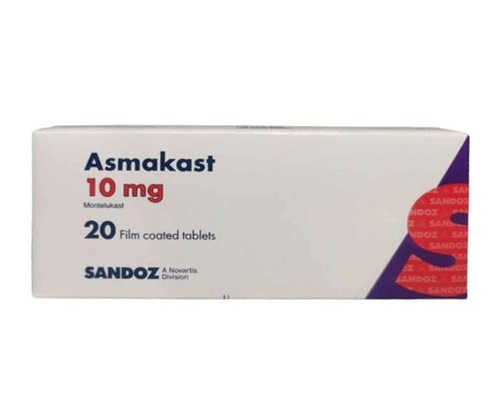Description
Trade name:
Pulmicort
Compound:
Each 1 ml of suspension contains:
Budesonide 0.5 mg
Auxiliary components:
Sodium chloride, sodium citrate, disodium edetate, polysorbate, citric acid (anhydrous), purified water.
Properties:
Budesonide in recommended doses has an anti-inflammatory effect in the bronchi, reducing the severity of symptoms and the frequency of exacerbations of bronchial asthma with a lower frequency of side effects than with systemic GCS. Reduces the severity of bronchial mucosal edema, mucus production, sputum formation and airway hyperreactivity. It is well tolerated during long-term treatment and does not have mineralocorticoid activity.
Indications:
– bronchial asthma requiring GCS therapy, for:
supportive therapy;
treatment of exacerbations when the use of budesonide in the form of an inhalation suspension is justified.
– chronic obstructive pulmonary disease for:
supportive therapy;
treatment of exacerbations when the use of budesonide in the form of an inhalation suspension is justified as an alternative to systemic GCS.
-stenosing laryngotracheitis (false croup).
Method of administration and dosage:
Bronchial asthma:
The dose of the drug is selected individually. If the recommended dose does not exceed 1 mg/day, the entire dose of the drug can be taken at one time (at one time). In case of taking a higher dose, it is recommended to divide it into two doses. It is advisable to determine the minimum effective maintenance dose for all patients.
Recommended starting dose:
Children aged 6 months and older: 0.25-0.5 mg/day. If necessary, the dose can be increased to 1 mg/day.
Adults/elderly patients: 1-2 mg/day.
Maintenance dose:
Children aged 6 months and older: 0.25-2 mg/day.
Adults/elderly patients: 0.5-4 mg/day.
Improvement in asthma control with maintenance therapy with Pulmicort may occur within 3 days of starting treatment, although the maximum effect may not be achieved for 2-4 weeks.
COPD:
Maintenance therapy for COPD:
Recommended starting dose:
Adults/elderly patients: 1-2 mg/day.
Maintenance dose:
Adults/elderly patients: 0.5-4 mg/day.
COPD exacerbations:
Adults/elderly patients: the daily dose is 4-8 mg. The dose should be divided into 2-4 doses. Treatment should be continued until clinical improvement is achieved, but not more than 10 days.
Stenosing laryngotracheitis (false croup):
Children aged 6 months and older: 2 mg/day. The dose can be taken at one time (at one time) or divided into two doses of 1 mg at an interval of 30 minutes.
Contraindications:
Children up to 6 months;
Hypersensitivity to budesonide.
With caution: pulmonary tuberculosis (active or inactive form), fungal, viral or bacterial infections of the respiratory system, liver cirrhosis, pregnancy, breastfeeding
Precautions:
Taking into account the risk of developing oropharyngeal candidiasis, the patient should thoroughly rinse the mouth with water after each inhalation of the drug.
In rare cases, symptoms due to systemic GCS exposure may occur, including hypoadrenalism and growth retardation in children. The severity of these symptoms is likely to depend on the dose, duration of therapy, concomitant or previous GCS therapy, and individual sensitivity.
There have been cases of facial skin irritation when using a nebulizer with a mask. To prevent irritation, wash your face with water after using the mask.
Budesonide is not intended for rapid relief of acute asthma attacks when short-acting inhaled bronchodilators are required.
Side effects:
From the respiratory system: often – candidiasis of the oropharynx, moderate irritation of the mucous membrane of the pharynx, cough, hoarseness, dry mouth, pneumonia (in patients with COPD); rarely – bronchospasm.
From the immune system: rarely – angioedema, immediate and delayed hypersensitivity reactions, including rash, contact dermatitis, urticaria, angioedema, bronchospasm and anaphylactic reaction.
From the nervous system: rarely – nervousness, excitability, depression, behavioral disorders.
From the organ of vision: very rarely – cataract, glaucoma (systemic action).
From the digestive system: rarely – nausea.
From the skin and subcutaneous tissues: rarely – the appearance of bruises on the skin.
Laboratory findings: very rare – decreased bone mineral density (systemic effect).
Storage method:
Keep out of reach of children at a temperature not exceeding 30 degrees.
Package:
The cardboard box contains 4 blisters of 5 plastic nebulas for inhalation, paper instructions.









